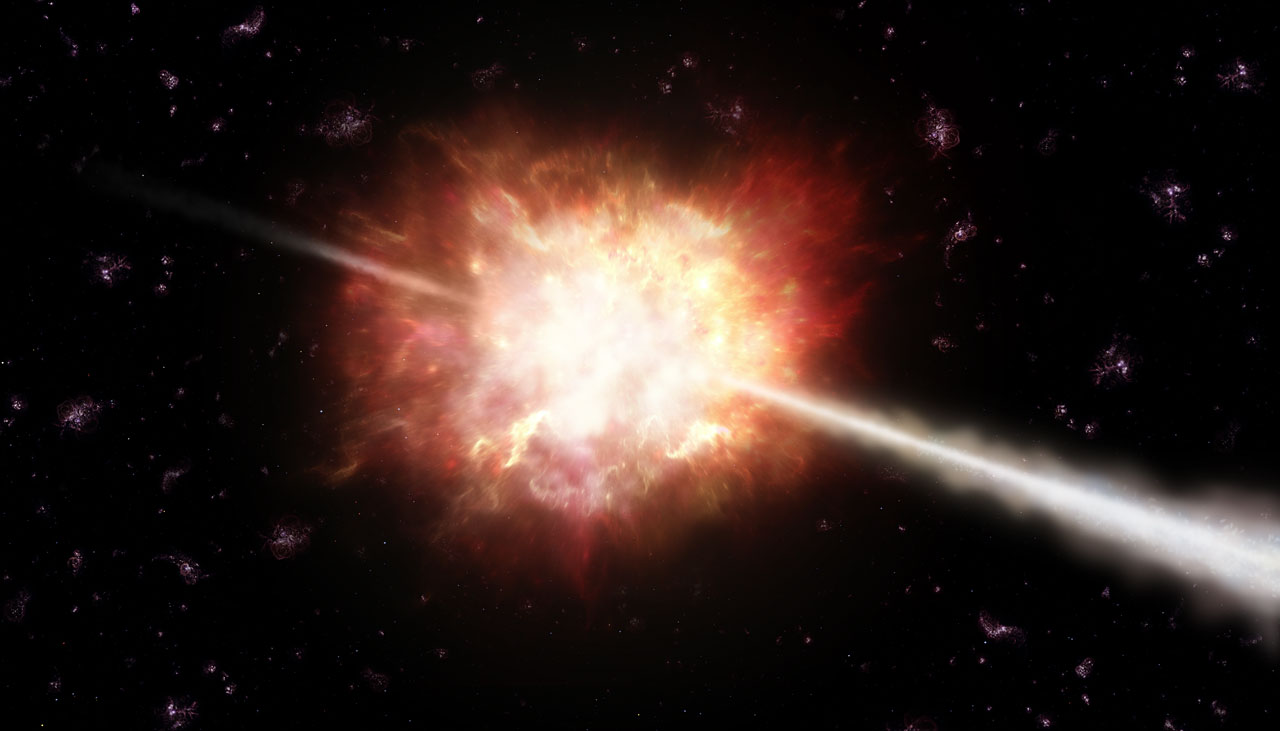Gamma-ray bursts come in two main flavors, short and long. While astronomers believe that they understand what causes these two kinds of bursts, there is still significant overlap between them. A team of researchers have proposed a new way to classify gamma-ray bursts using the aid of machine learning algorithms. This new classification scheme will help astronomers better understand these enigmatic explosions.
Ever since the 1960’s, astronomers have identified brief intense bursts of high energy gamma ray radiation. These bursts come from all over the sky, and so they likely come from outside the galaxy. Over the decades astronomers have identified two different kinds of these gamma-ray bursts, which they call short and long. The short ones last for less than 2 seconds on average and account for around 30% of all bursts. The remainder, the long ones, tend to be much brighter than their shorter counterparts.
Most astronomers believe that different processes lead to the two different populations of gamma-ray bursts. It’s thought that mergers of compact objects like neutron stars lead to the short gamma-ray burst emissions. And on the other hand, it’s likely that exotic kinds of supernova explosions lead to the long ones. In the latter case, if large enough stars explode with high enough rotation rates, the exploding material can swirl around and form a beam of radiation that blasts out into space. If that beam happens to point towards the Earth, we see it as a long gamma-ray burst.
But telling the difference between the two is difficult. Many gamma-ray bursts sit right on the boundary between short and long, and some explosions share qualities of both.
A team of researchers have proposed a new mechanism for distinguishing these two classes of observations. They employed machine learning algorithms trained on existing data sets and computer simulations to find the key distinguishing features between short and long gamma-ray bursts. They found that they were able to cleanly separate the populations of observations even when the duration time of the blast was right at the boundary.
The astronomers hope that this tool will be useful to help easily classify future observations, which can then be used to refine our understanding of the physical mechanisms behind the explosions.


Considering the rectilinear propagation of light; the phenomenon which tells us that light travels in a straight line, and knowing how fast Planet Earth, the solar system, the Milky Way are moving in the heavens, then it goes without saying that we need some good luck to get hit by a GRB unless they are exceedingly common phenomena.
If we sit on the boundary of the GRB light envelope, or Earth cannot see the full GRB because of a partial obstruction, like a star or a galaxy, then the GRB might turn out to be ‘short-lived’ from our point of view. On the other hand full exposure becomes a ‘longer-lived’ GRB.
My guess is that all GRBs have the same mechanism to blast; it is just a question of perspectives.